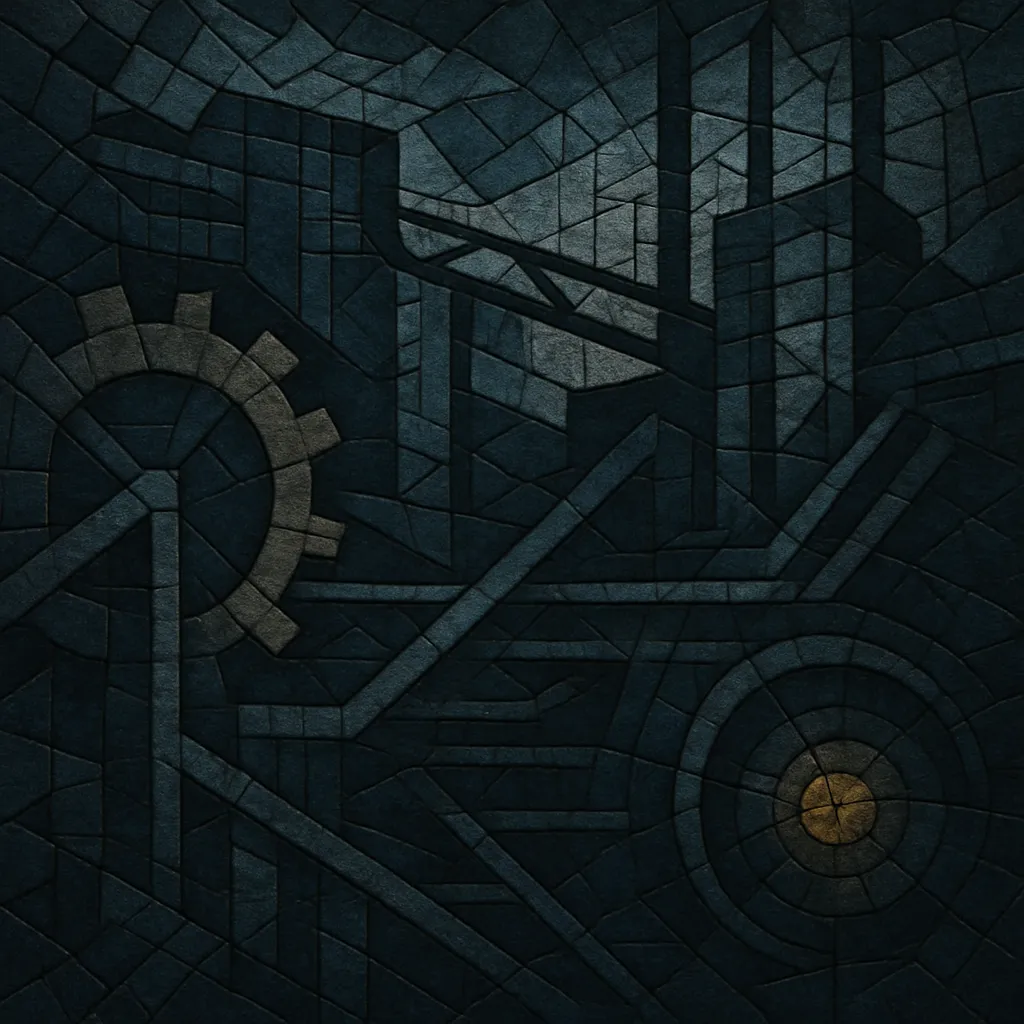Techstep is a dark, stripped‑down branch of drum and bass that emerged in the UK during the mid‑to‑late 1990s. It favors rigid, two‑step drum patterns, stark sci‑fi atmospheres, and heavily processed "Reese"-style basslines over the funkier break-chopping of earlier jungle.
The aesthetic is cold, mechanical, and dystopian: metallic snares, tightly quantized rhythms, and industrial textures combine with minor, dissonant stabs and eerie pads. Typical tempos sit around 170–175 BPM, with emphasis on sub‑bass weight, tension, and precision rather than melodic complexity.
Techstep arose in the UK as jungle and early drum and bass took a darker, more minimal turn. Producers associated with No U‑Turn (Nico, Trace, Ed Rush, Fierce) pushed a techno‑leaning, colder sound that pared back frenetic break edits in favor of rigid, stepping rhythms and dystopian sound design. The approach was influenced by techno and industrial music’s palette and by the darker currents of jungle (often called “darkside”).
The No U‑Turn compilation “Torque” (1997) is widely cited as a cornerstone, defining the genre’s clinical, sci‑fi identity. Around the same time, Metalheadz and RAM releases showcased precision engineering, heavy sub‑bass, and two‑step patterns. Artists like Ed Rush, Trace, Source Direct, and Dom & Roland shaped the vocabulary: re‑sampled Reese basslines, metallic snares, and ominous atmospherics.
By 1998, the techstep template evolved toward sleeker, more flowing bass design and increased funk in the midrange—an evolution crystallized by Ed Rush & Optical’s “Wormhole” (1998) and the rise of Virus Recordings, leading to what would be termed neurofunk. Techstep’s structural economy and sound‑design ethos, however, remained embedded in the broader drum and bass continuum.
Techstep’s emphasis on stepping drums, sub‑focused mixes, and dystopian mood directly informed neurofunk, darker strands of drum and bass (e.g., darkstep, skullstep), and later cross‑pollinations with industrial and hardcore (e.g., crossbreed). Its DJ‑friendly, 16/32‑bar structures and tension‑driven arrangements remain a foundation for modern tech‑leaning DnB sets.
Aim for 170–175 BPM. Use a two‑step ("steppa") drum pattern: a solid kick, a heavy metallic snare on 2 and 4, and tightly programmed hi‑hats with sparse, deliberate ghost notes. Focus on precision rather than busy break edits, but you can layer processed fragments of classic breaks (e.g., Amen, Think, Hot Pants) to add texture while maintaining a rigid grid.
Center the track around a powerful sub (40–60 Hz sine or filtered re‑sampled bass) and a mid‑range Reese. Create movement with detune, phase, notch/band‑pass filtering, and automation of LFOs. Re‑sampling is essential: render bass passes, distort, filter, and re‑layer to build grit and variation. Augment with mechanical one‑shots (clanks, hisses) and cold atmospheres (pads, drones, sci‑fi FX).
Keep harmony minimal and dissonant. Favor minor tonalities, tritones, and tense intervals. Short, staccato synth stabs and atonal textures reinforce the dystopian character. Melodic material is secondary to groove, bass motion, and sound‑design tension.
Use a DJ‑friendly structure: 16/32‑bar intro for mixing, a tension‑building pre‑drop, the main drop with full rhythm and bass, mid‑section development via re‑sampled bass variations, and a concise outro. Employ subtractive arrangement (mute elements to breathe) and automation (filters, distortion mix, stereo width) to sustain momentum without clutter.
Prioritize sub clarity: low‑cut non‑bass elements, keep the sub mono, and avoid overlapping fundamental notes. Carve space with precise EQ, tight transient control on snares, and controlled distortion on the mid‑bass. Reserve wide stereo for highs and FX; keep kick, snare, and sub centered. Aim for punch and headroom rather than excessive loudness.
Sample sci‑fi/horror dialogue or foley sparingly to set mood. Use hardware/sampler emulations (Akai/Emu character) or saturation to add bite. Maintain rhythmic discipline—techstep’s impact comes from restraint and surgical sound placement.


